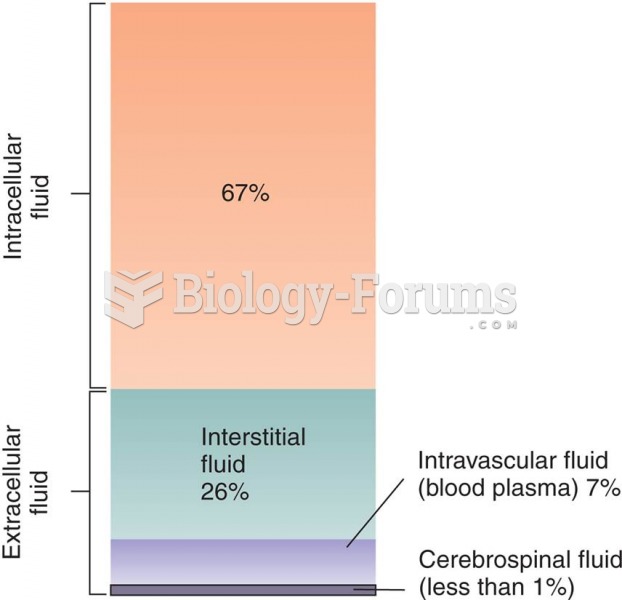Answer to Question 1
4
Rationale 1: Dextran is a colloid.
Rationale 2: Fresh frozen plasma is a blood product.
Rationale 3: Hetastarch (Hespan) is a colloid.
Rationale 4: Lactated Ringer's is a crystalloid IV fluid.
Global Rationale: Lactated Ringer's is a crystalloid IV fluid. Dextran is a colloid. Fresh frozen plasma is a blood product. Hetastarch (Hespan) is a colloid.
Answer to Question 2
1, 2, 4
Rationale 1: Fluid replacement agents may be categorized as blood products, colloids, or crystalloids. Colloid and crystalloid infusions are often used when up to one-third of an adult's blood volume is lost.
Rationale 2: Fluid replacement agents may be categorized as blood products, colloids, or crystalloids. Colloid and crystalloid infusions are often used when up to one-third of an adult's blood volume is lost.
Rationale 3:For mild cases of shock, oral fluids, such as electrolyte replacement fluids and water, can be used to treat shock.
Rationale 4: Fluid replacement agents may be categorized as blood products, colloids, or crystalloids. Colloid and crystalloid infusions are often used when up to one-third of an adult's blood volume is lost.
Rationale 5:For mild cases of shock, oral fluids, such as electrolyte replacement fluids and water, can be used to treat shock.
Global Rationale: Fluid replacement agents may be categorized as blood products, colloids, or crystalloids. Colloid and crystalloid infusions are often used when up to one-third of an adult's blood volume is lost. For mild cases of shock, oral fluids, such as electrolyte replacement fluids and water, can be used to treat shock.






